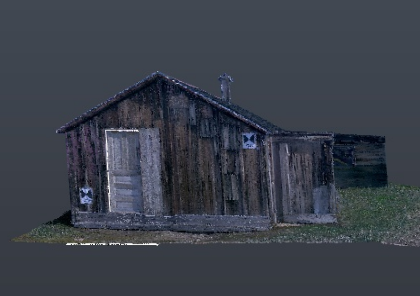Kayotuk House
This small building also was constructed in the early 1890s with several additions built on since. Repairs were undertaken to conserve this building so that it can remain as a feature within the landscape of the Park. Currently, the building is used for storage purposes.
Region:
Yukon
Field Documentation:
July 18, 2019
Field Documentation Type:
Terrestrial LiDAR
Historic Period:
1890CE
Latitude:
69.568888
Longitude:
-138.91408
Threat Level
History
There is presently very little information about the history or occupants of Kayotuk House. Evidenced by its appearance in historic photographs, the original portion of the building was constructed in the early half of the 1890s [1,2].
Construction

Kayotuk House has undergone at least three major alterations since its original construction. When first built, the building was approximately 3.7 m by 4.1 m. It has a gable roof, with a door and window in the south wall and possibly a window in the north wall [2]. The interior walls were clad with shiplap sheathing [2]. This is also the only known building on the island where effort was put into the decorative appearance of the exterior, which was done in a Carpenter Gothic style. The exterior was finished with vertical rough sawn sheathing with battens over the joints between boards. The battens were chamfered with sloped ends that butted into trim at the top and bottom of the walls that were similarly chamfered between each of the battens. There were also decorative bargeboards at either gable end of the building that include a finial or drop at the peak of the roof. It is not known how the original doors and windows appeared and were tied into this decorative scheme. It is also not known which of the doors or windows were part of the original portion of the structure.
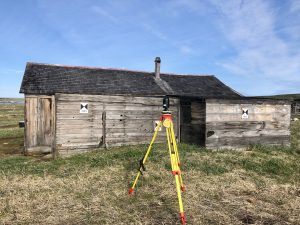
The first addition was likely the extension on the south side of the building, extending it by 3.1 m. The walls of the extension were finished in the same materials as the original, although the battens were removed and reconfigured on the exterior to accomodate this addition resulting in a new wall finish and appearance. A new door was added onto the south wall and became the main entrance for the building [2]. The second addition was a lean-to shed built along the east wall of the original portion of the building. The shed is approximately 2.5 m by 3.1 m and is a framed structure finished on the interior and exterior with wide shiplap sheathing. The roof was clad in shingles, and this addition only has some portions of floor remaining. The chronology for these two additions is assumed, but not known [2]. The last identifiable addition was another lean-to added to the east wall, south of the first lean-to. This shed is approximately 1.1 m by 3.7 m and features an almost flat roof. The exterior walls are clad in differently sized swan boards, while the interior is unfinished. The floor consists of floor boards siting on joists resting directly on the ground [2]. At one point, there was also something built onto the north end of the building that has left a large berm outlining its shape. Its purpose, appearance and connection to this building is unknown.
Current Condition
Repairs have been undertaken to conserve this building as a feature within the park, and it is currently used as storage [1].
Notes
[1] Yukon Environment. 2006. Herschel Island Qikiqtaruk Territorial Park Management Plan. Prepared with the Inuvialuit Game Council, the Aklavik Hunters and Trappers Committee along with the Wildlife Management Advisory Council (North Slope) for the Yukon Government. [2] Preservation Plan. 1990. Herschel Island Historic Resources Preservation Plan. Final report, December, prepared by Heritage Branch, Department of Tourism, Yukon.
This gallery contains images of Kayotuk House as it appeared in 2019. Point clouds of the exterior and interior of the building can also be viewed.

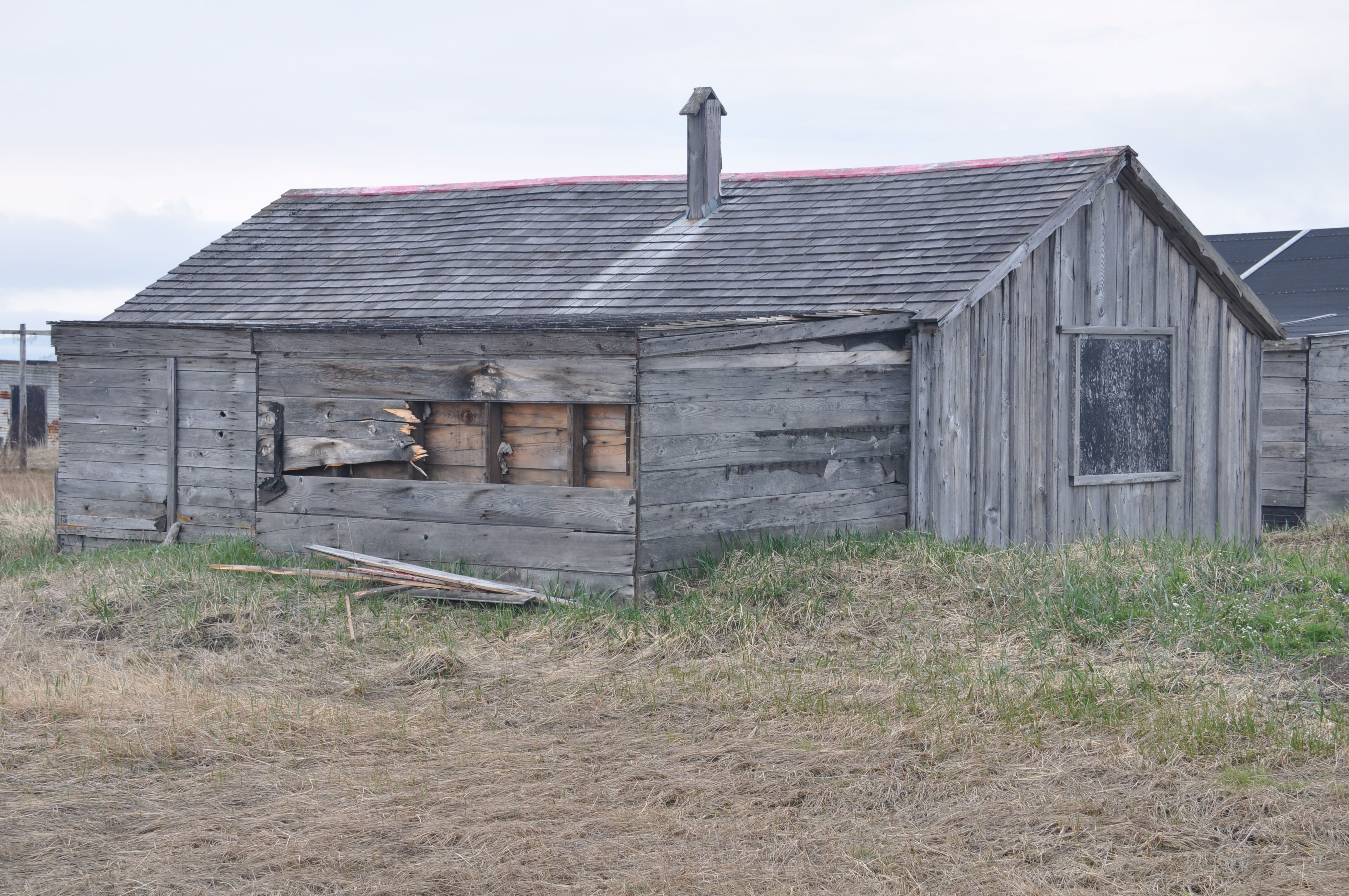
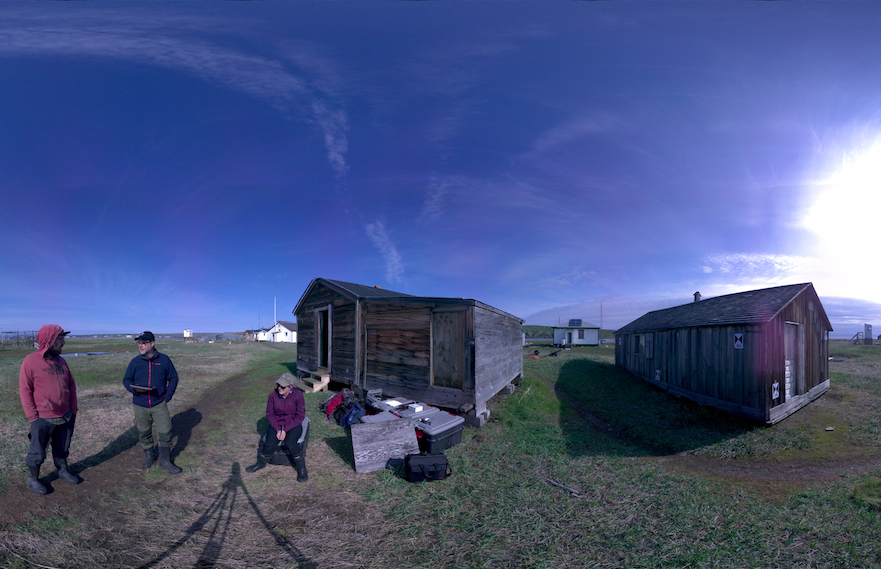

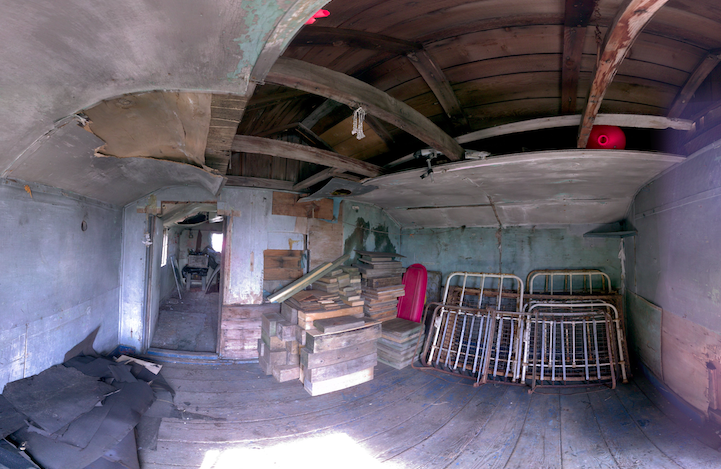
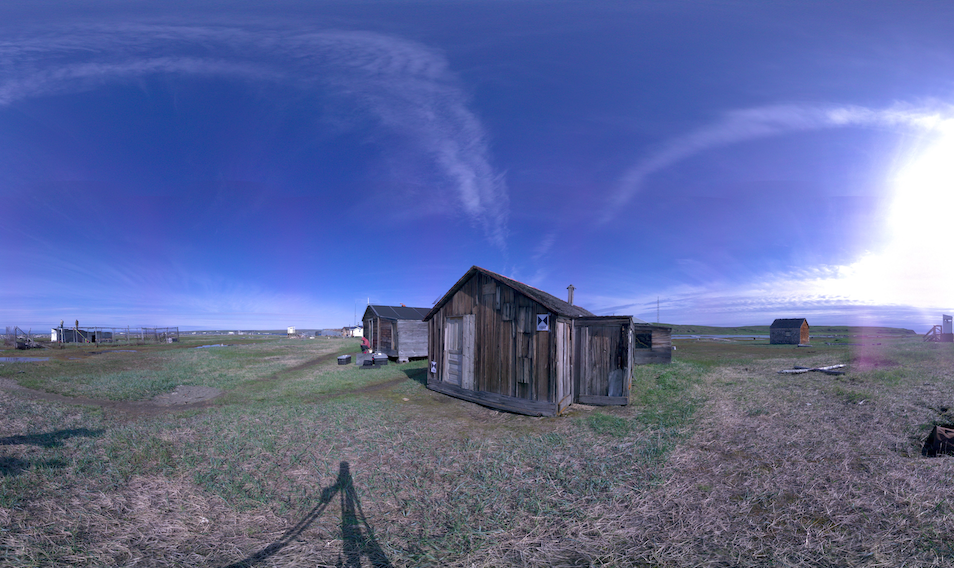
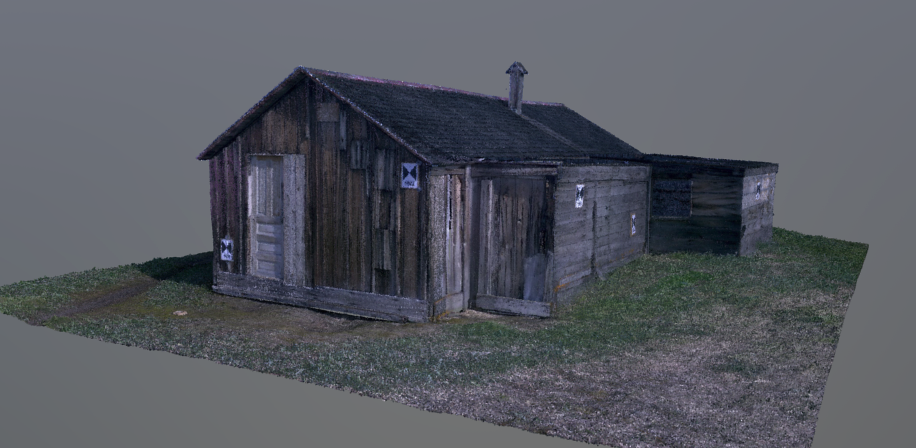

Open Access Data
The raw data files for this project are available for download from the archive repository. Scans are .las file format. Please download the metadata template to access metadata associated with each file. All data is published under the Attribution-Non-Commercial Creatives Common License CC BY-NC 4.0 and we would ask that you acknowledge this repository in any research that results from the use of these data sets. The data can be viewed and manipulated in CloudCompare an opensource software.
Click on the 3D model of Pauline Cove. Marker (8) shows the location of Building no. 12.
Digitally Capturing Small House, no. 12
Kayotuk House was digitally captured with a Leica BLK 360 terrestrial laser scanner. Paper targets were used and mounted on the exterior walls of the building. The exterior was captured with 11 scanning locations placed circularly around the building to capture the entirety of the structure. On one of these scans, the front door was left open in order to have common features captured to combine the exterior with the interior scans. The interior was captured through an additional six scanning locations, with one positioned in front of the open door to be used to combine the interior and exterior scans. No targets were used to capture the interior of the building, and scans were registered together using cloud-to-cloud registration in AutoDesk ReCap Mobile and Pro.

Scan Locations
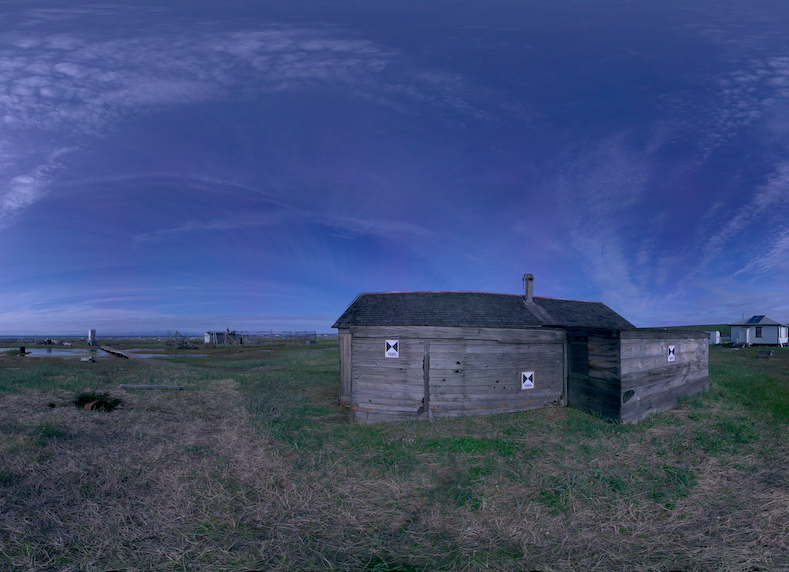
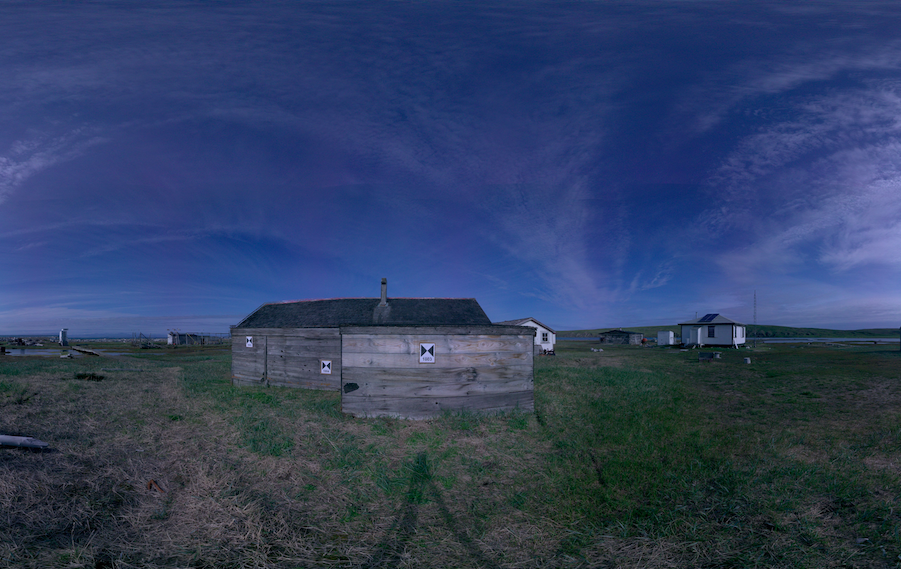
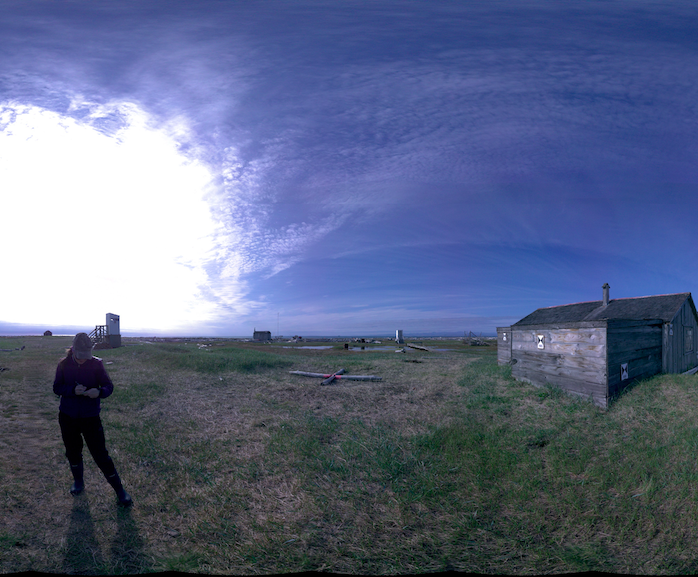

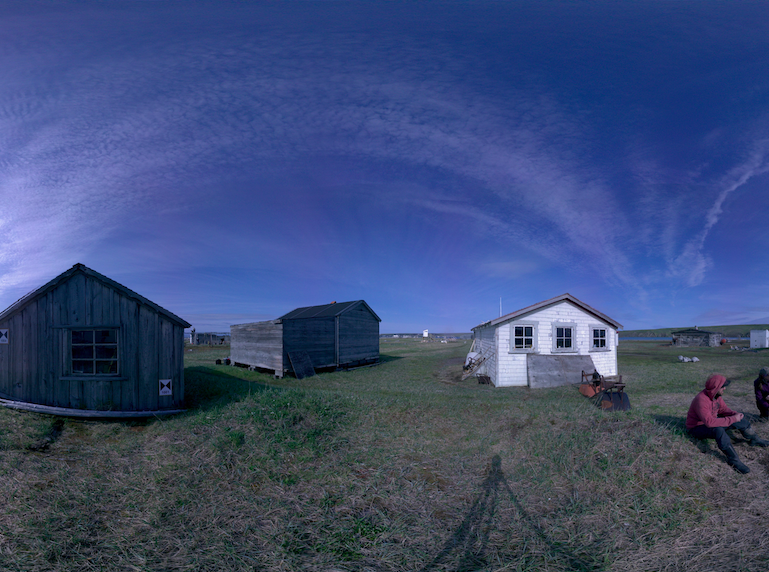
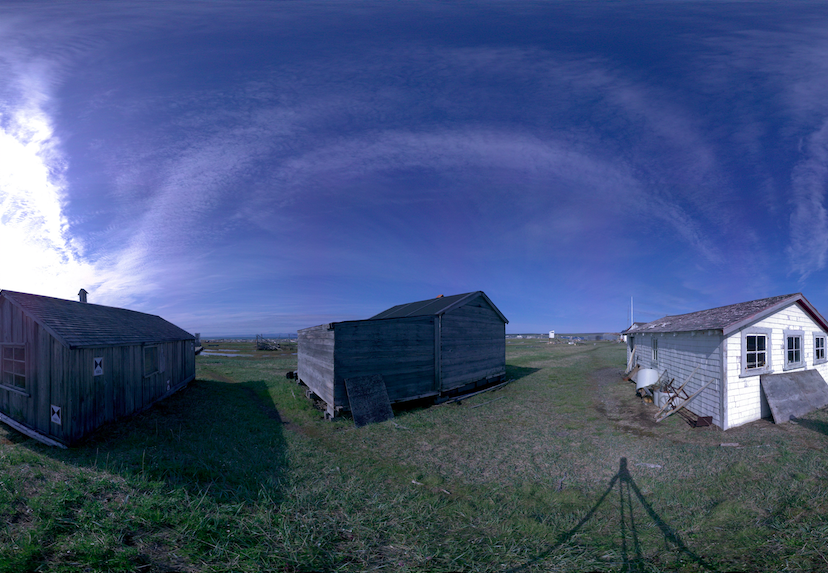
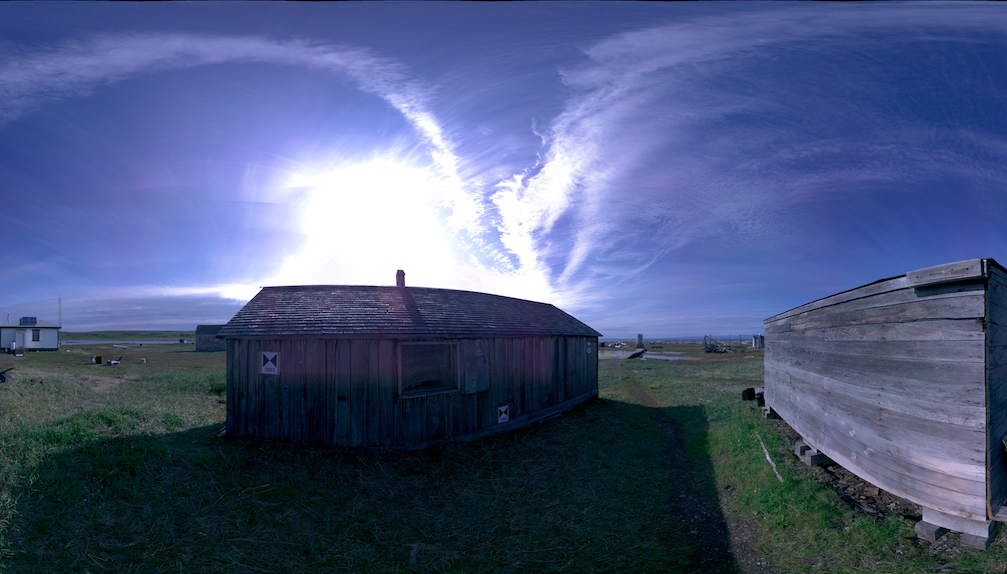


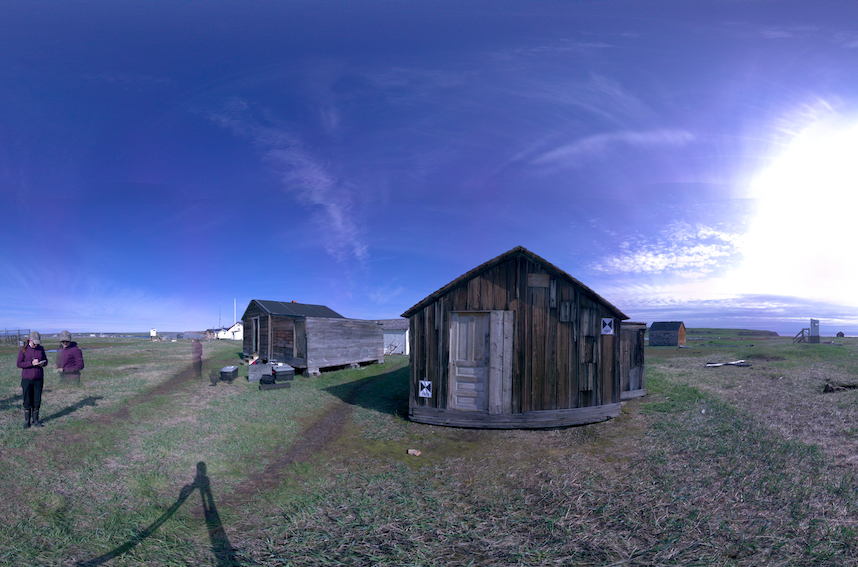


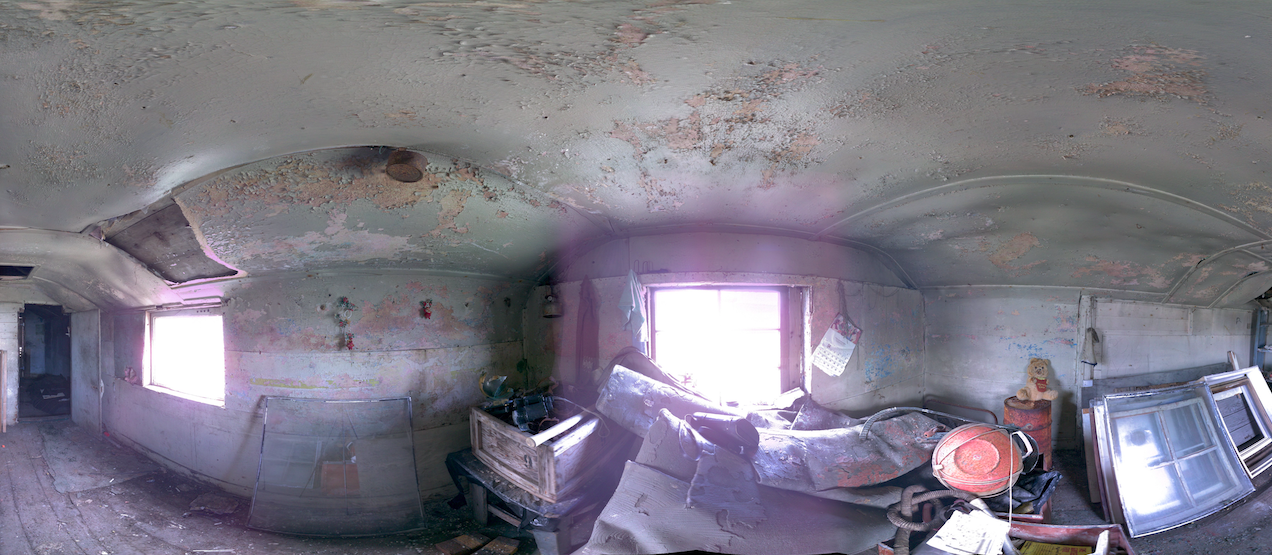
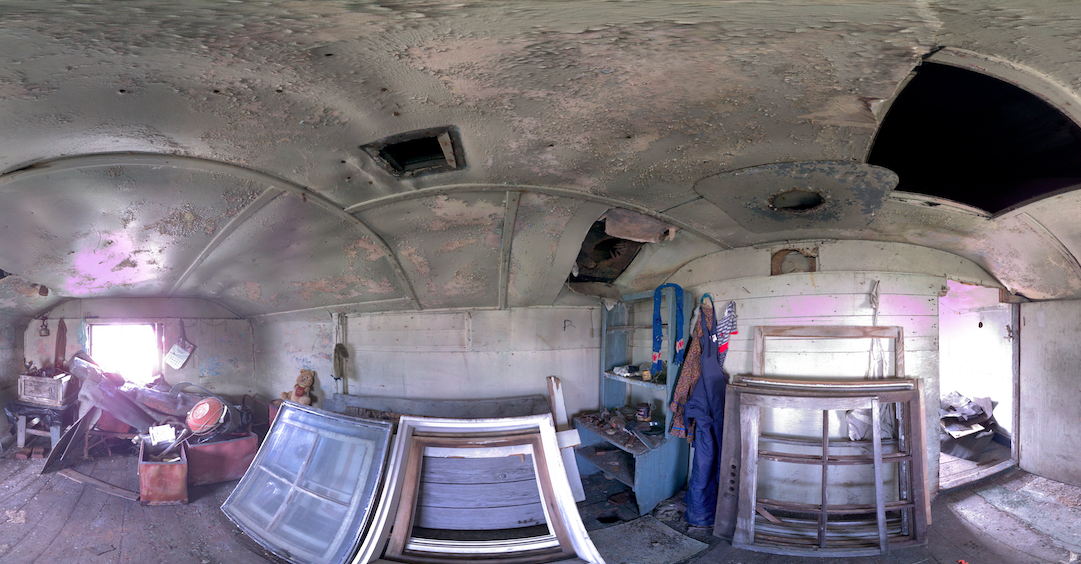
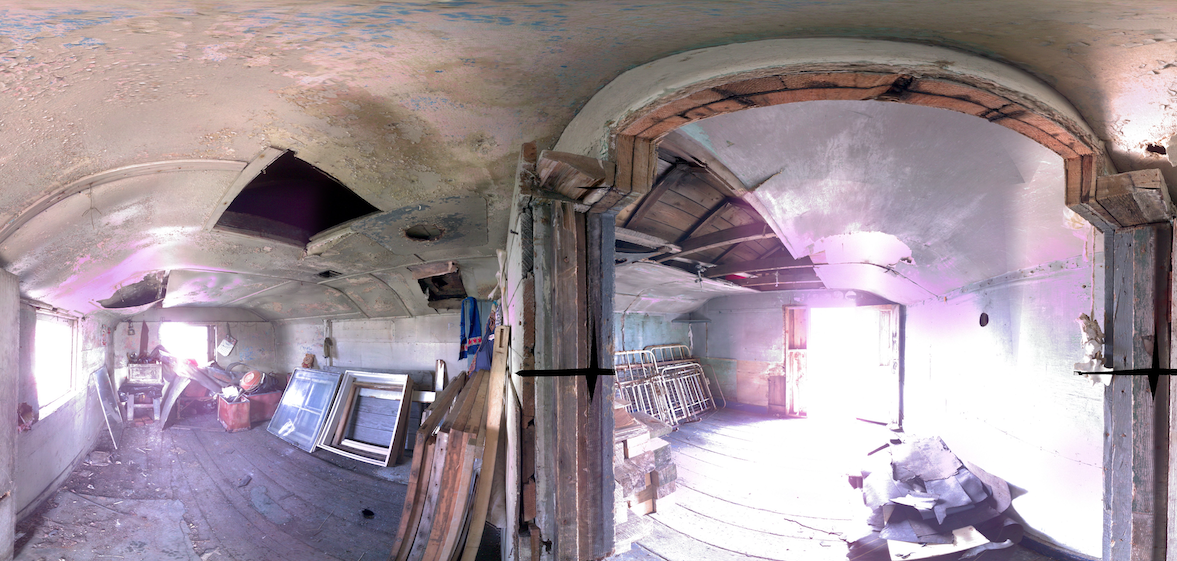
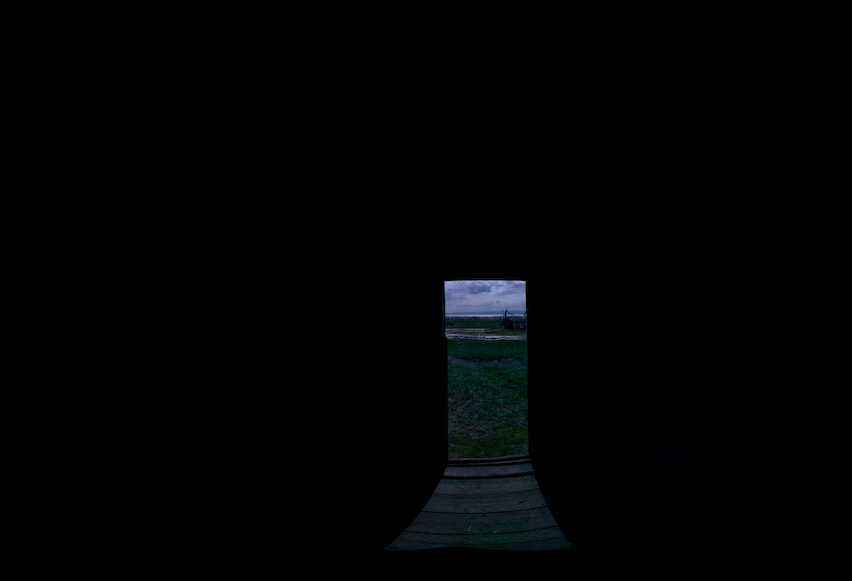
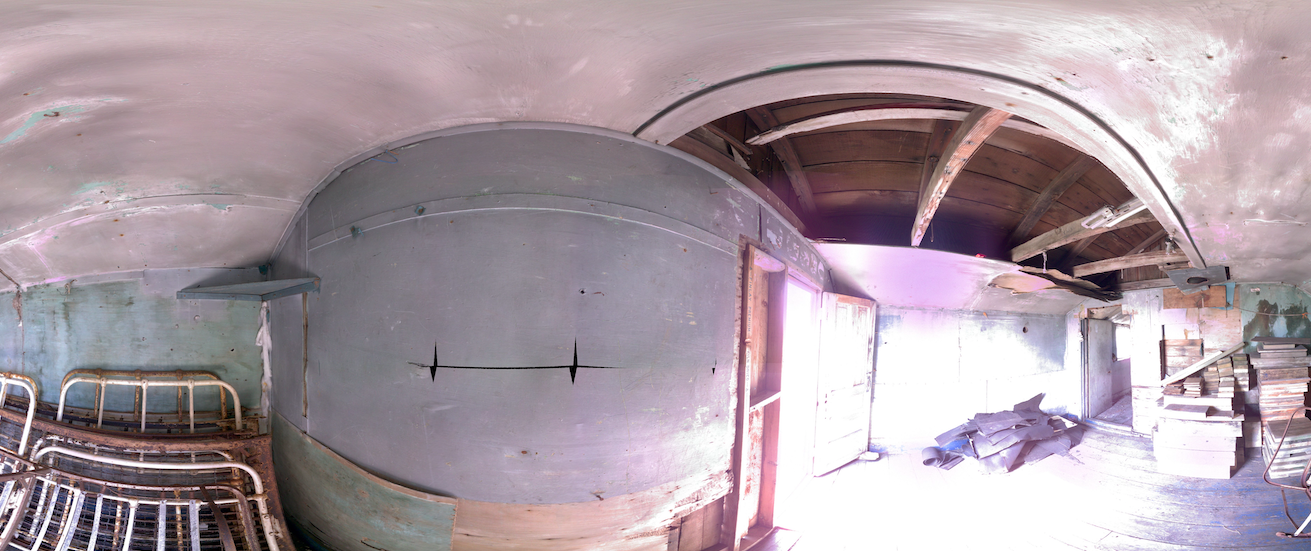
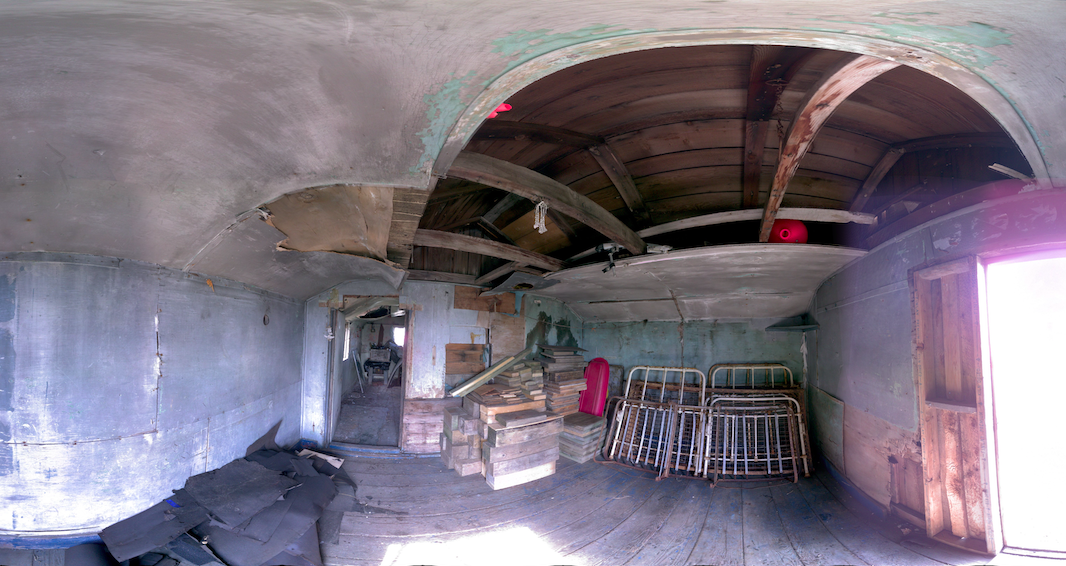
Grab the Slider With Your Mouse and Move it Left and Right to Compare Images. The photograph on the right, was taken by Murielle Nagy in 1991 for the Herschel Island and Yukon North Slope Inuvialuit Oral History Project for the Inuvialuit Social Development Program and is stored at the Inuvialuit Digital Library. The image on the left, is the point cloud data from the 2019 collected by the Capture2Preserv Team.

